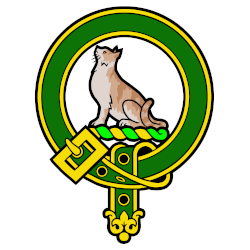The latest and long-awaited book in George RR Martin’s A Song of Ice and Fire, A Feast For Crows, was released on November 8. The book’s delivery represents the end of a long wait for fans of the series, although – prodded most likely by the degeneration of Jordan’s Wheel of Time series – most fans seem to prefer to wait long enough for Martin to get it right rather than demanding a quick release; and in the face of continuing difficulty with the scope of the work, Martin eventually split the book he had planned into two, publishing what he was done with and leaving the remainder of what he had planned for the next book. The result is a clear triumph, and vindicates that decision.
So what made it in, and what was left out?
Well, it’s simplest to tell you what isn’t here.
The Queen of Dragons, Daenarys, is not in the book, except in the form of persistent rumors and a preview chapter to the sequel.
Events in the North, particularly on the Wall, are not covered, although we hear of some by rumor or recollection after the fact.
We do see events in Dorne, Kings Landing, Braavos, Oldtown, and other areas, mostly in the south.
The author has described A Feast for Crows as a transition book; he’s setting up the characters, many of whom began the series as children, to spend time growing up a little. Some of the most obvious candidates for this are Arya, Bran, and Tommen; while Tommen is pretty much confined to the Iron Throne, and Bran is off-camera, there are some very promising hints about what Arya is busy doing and what Sam will end up doing, along with Tommen beginning to show a bit of personality. However, they are all definitely setup, rather than the passage of years.
In some ways this book is calmer than the first three in the series. There are no devasting revelations, though there is no shortage of minor ones. The characters mostly proceed along their expected paths, adding more detail to what had been previously only speculation, and seeking to secure their positions, however high or humble, as the chaos of warfare recedes.But do not be discouraged – a fair amount of this effect is due to the release of multiple sample chapters, each one setting the course of one of the main viewpoint characters in the book.
While the book lacks the dramatic action and conflict of earlier books, it provides a different sort of pleasure – watching Martin set up his characters to take the stage again, and both predicting and anticipating how the arrangements being made will result.
Prophecy plays a somewhat larger role in this volume than in prior works. One of the main characters (I won’t say which) recalls a prophecy they were given some time ago, and that prophecy goes a long ways towards explaining some of that character’s actions. The appropriate use of prophecy is minimal; in the prior volumes Martin kept close to that standard, with hints of prophecy in the background that never quite took center stage. The more central use of prophecy to this character as a motivator for their actions is interesting, and potentially beneficial to the story, but also presents a risk of overdoing it. Hopefully Martin will keep this new prominence limited mainly to a single character.
